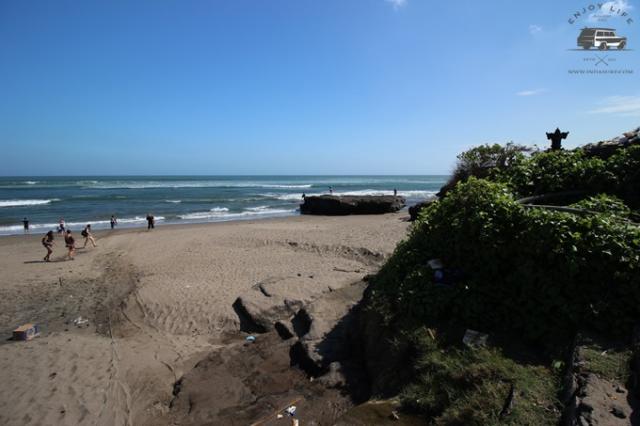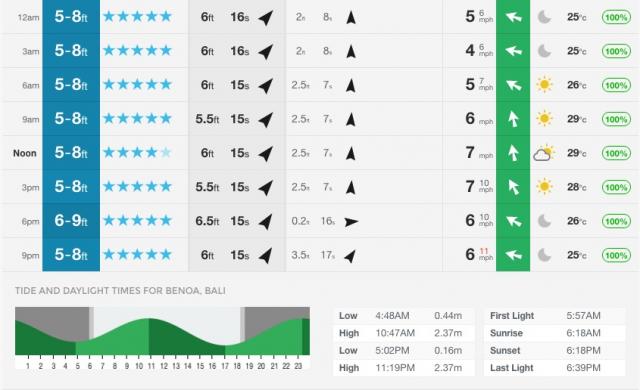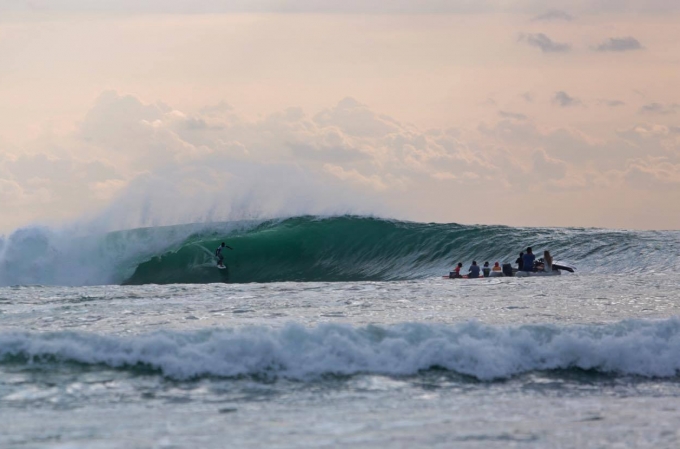Guide to Tides
September 10, 2016 | 0 Comment

One of the most important factors that determine the shape and quality of waves is the height of the tide. Understanding tides and how they affect the waves we ride will result in choosing the optimal times to surf.

Tides are the results of the gravitational pull of the moon on the earth. As the moon revolves around the earth it draws the ocean closer, causing the ocean to rise in what we observe as a high tide. In a 24-hour period, the oceans will experience 2 high tides and 2 low tides; a tide change approximately every 6-7 hours. Furthermore, during a full moon or new moon, we often experience more swell and slightly higher tides.

At low tide there will be less water over the surf break, often revealing the reef, rocks and/or sand below. Conversely, during high tide, more water will be present over the break resulting in higher shore break and a smaller beach. During tide shifts, water will either be flowing in towards the beach (high tide) or flowing out (low tide). Incoming tides will assist the waves by pushing them towards the beach, resulting in slightly higher and more consistent waves. On the other hand, an outgoing tide will hinder the waves coming to shore and may result in smaller, less consistent waves.

Generally, higher tides will result in fatter, slower waves because of the excess water over the break. At lower tides, the shallow water will cause the waves to break much faster and even barrel depending on the surf break. Knowing which tides are best suited for each surf break takes experience, which the locals have plenty of. Refer to the local knowledge when travelling to a new surf break. Be respectful and courteous; you may just score a tip or two.

If there is a jetty, pier or other nonmoving object (ex. Batu Bolong Temple) present, we can gauge the current tide based on where the water marks appear on those landmark.
How To Read Tide Charts
Tide charts are incredibly useful and accurate tools that predict at what time and how the high and low tide will occur. While there are many forecasting tools available, some are more reliable than others depending on the location of the surf break. For demonstration, we will use the surf forecast for Canggu provided by Magicseaweed.com

On the bottom half of your screen you will see a graph displaying the tide in Benoa Bali over a 24 hours period. As mentioned before, two high tides and two low tides are shown. This is purely a visual guide.

Next to the graph, on the right, shows the actual numerical breakdown of the tide. We can see in closer detail of when exactly the high/low tide will occur, as well as the exact height of the tide during that time.

Together with the visual guide, we can estimate when middle tide will occur and whether the tide is incoming or outgoing. While learning the theory behind reading tides will give you a better understanding of where and when to surf, knowledge rarely trumps experience. Try to surf often and at different tides when learning a new spot, and observe when the peak times coordinate with best waves.
Categories
Popular post
Surfing Spots: An Advanced Guide of Surfing Beaches in Bali
May 22, 2017
Bali is every surfer’s paradise. There are tons of surfing spots around Bali whether you...
Summer Surf Camp for Kids
July 06, 2020
Summer is the time of school holidays so it's usually associated with a family...
A General Guide to Surfboard Fins
September 21, 2016
(cover photo credit @victorcrespo.photo) This is by no means a definitive guide to...



